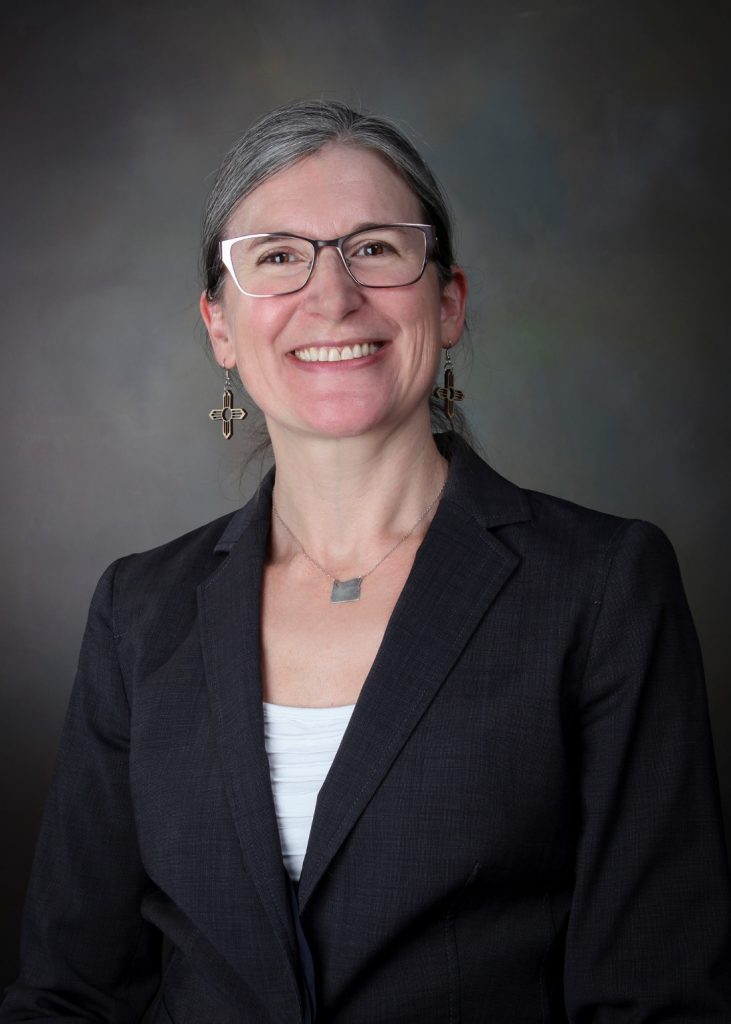Amanda N. Barry
Manager, Office of Science Program

Manager, Office of Science Program
(505) 263-0106
Sandia National Laboratories, New Mexico
P.O. Box 5800
Albuquerque, NM 87185-0885
Biography
The Molecular and Microbiology Department conducts fundamental and applied research in cell biology, immunology, genomics, and microbiology, with a focus on the development and use of innovative bioanalytical technologies such as synthetic biology, nanotechnology, multi-omics, advanced optical imaging, and data analysis tools to advance the understanding of biological systems. Key sponsors include the DOE Office of Science (BER and BES), the DOE Office of Energy Efficiency and Renewable Energy (BETO), ARPA-E, DoD, the Defense Threat Reduction Agency, DHS, the National Institutes of Health, and the Sandia Lab Directed Research & Development Program.
Barry joined Sandia in 2020, after serving as a scientist at Los Alamos National Lab. In addition to her management roles, Barry serves as the primary investigator for the Leveraging Algae Traits for Fuels (LEAF) project focusing on algal biochemistry and biology for biofuel and bioproducts.
Education
Bachelor’s Degrees: Biochemistry and Biophysics; Bioresource Research, Oregon State University
Masters Degree: Bacteriology, University of Wisconsin-Madison
Doctoral Degree: Biochemistry and Molecular Biology, Oregon Health and Science University
Postdoctoral Fellowships: Biochemistry, Johns Hopkins University; Bioscience, Los Alamos National Lab
Selected Publications
- Schambach, J., Finck, A., Kitin, P., Hunt, C., Hanschen, E., Starkenburg, S., Vogler, B.W., and Barry, A.N. 2020. Growth, total lipid, and omega-3 fatty acid production by Nannochloropsis spp. cultivated with raw plant substrate. Algal Research 51:102041.
- Negi, S., Perrine, Z., Friedland, N., Kumar, A., Tokutsu, R., Minagawa, J., Berg, H., Barry, A.N., Govindjee, G., and Sayre, R. 2020. Light regulation of light‐harvesting antenna size substantially enhances photosynthetic efficiency and biomass yield in green algae. The Plant Journal Online 17 March 2020 https://doi.org/10.1111/tpj.14751
- Vogler, B.W., Starkenburg, S., Sudasinghe, N., Rollin, J.A., Pattathil, S., and Barry, A.N. 2018. Characterization of plant carbon substrate utilization by Auxenochlorella protothecoides. Algal Research 34:37-48.
- Huesemann, M., Crowe, B., Chavis, A., Valentine, D., Wigmosta, M., Dale, T., Twary, S., Barry, A.N., and Yoshida, R. 2016. Simulation of outdoor pond cultures using indoor LED-lighted and temperature-controlled raceway ponds and Phenometrics photobioreactors. Algal Research 21:178-190.
- Barry, A., Wolfe, A, English, C, Ruddick, C, Lambert, D. DOE (U.S. Department of Energy). 2016. National Algal Biofuels Technology Review. U.S. Department of Energy, Office of Energy Efficiency and Renewable Energy, Bioenergy Technologies Office.
- Negi, S., Barry, A.N. (shared first author), Friedland, N., Appuhamilage, N.S., Subramanian, S., Pieris, S., Holguin, F.O., Dungan, B., Schaub, T., and Sayre, R.T. 2015. Impact of nitrogen limitation on biomass, photosynthesis, and lipid accumulation in Chlorella sorokiniana using a pond-simulated environment. Journal of Applied Phycology 28(2):803.
- Barry, A.N., Starkenburg, S.R., and Sayre, R.T. 2015. Strategies for optimizing algal biology for enhanced biofuel production and carbon capture. Front. Energy Res., Online 02 February.
- Huang, Y., Nokhrin, S., Hassanzadeh-Ghassabeh, G., Yu, C.H., Yang, H., Barry, A.N., Tonelli, M., Muyldermans, S., Dmitriev, O.Y., and Lutsenko, S. 2014. Nanobodies link domain dynamics and intracellular targeting of human copper transporter ATP7B. J Biol Chem 289(47):32682-93.
- Subramanian, S., Barry, A.N., Pieris, S., and Sayre, R.T. 2013 Comparative energetics and kinetics of autotrophic lipid and starch metabolism in chlorophytic microalgae: Implications for biomass and biofuel production. Biotechnology for Biofuels 6:150.
- Hatori, Y., Clasen, S., Hasan, N.M., Barry, A.N., and Lutsenko, S. 2012. Functional partnership of the copper export machinery and glutathione balance in human cells. J Biol Chem 287(32):26678-87.
- Otoikhian, A.A., Barry, A.N., Mayfield, M., Nilges, M.J., Huang, Y., Lutsenko, S., and Blackburn, N.J. 2012. The Lumenal Loop M672-P707 of the Menkes Protein (ATP7A) Transfers Copper to Peptidylglycine Monooxygenase. J Am Chem Soc 134(25):10458-68.
- Barry, A.N., Otokhian, A., Bhatt, S., Shinde, U., Blackburn, N., and Lutsenko, S. 2011. The lumenal loop M672-P707 of copper-transporting ATPase ATP7A binds metals and facilitates copper release from the intramembrane sites. J Biol Chem 286(30):26585-94.
- Barry, A.N., Shinde, U., and Lutsenko, S. 2010. Structural organization of human Cu-ATPases: Learning from building blocks. J Biol Inorg Chem 15(1):47-59.
- Barry, A.N., Akram, Z., and Lutsenko, S. 2010. Chapter 8: Mechanism of Human Copper Transporter Wilson’s Disease Protein in Protein Folding and Metal Ions: Mechanisms, Biology and Disease. CRC Press.
- Leshane, E.S., Shinde, U., Walker, J.M., Barry, A.N., Blackburn, N.J., Ralle, M., and Lutsenko, S. 2009. Interactions between copper-binding sites determine the redox status and conformation of the regulatory N-terminal domain of ATP7B. J Biol Chem 285(9):6327-36.
- Barry A.N., Clark, K.M., Otoikhian, A., van der Donk, W.A., and Blackburn, N.J. 2008. Selenocysteine positional variants reveal contributions to copper binding from cysteine residues in domains 2 and 3 of human copper chaperone for superoxide dismutase. Biochem 47(49):13074-83.
- Barry, A.N. and Blackburn, N.J. 2008. A Selenocysteine Variant of the Human Copper Chaperone for Superoxide Dismutase. A Se-XAS probe of Cluster Composition at the Domain 3-Domain 3 Dimer Interface. Biochem 47(17):4916-28.
- Stasser, J.P., Barry, A.N., and Blackburn, N.J. A Multinuclear Copper (I) Cluster Forms the Dimerization Interface in Copper-loaded Human Copper Chaperone for Superoxide Dismutase. Biochem 46(42):11845-56.
- Himes, R.A., Park, G.Y., Barry, A.N., Blackburn, N.J., and Karlin, K.D. 2007. Synthesis and X-ray Absorption Spectroscopy Structural Studies of Cu(I) Complexes of HistidylHistidine Peptides: The Predominance of Linear 2-Coordinate Geometry. J Am Chem Soc 129(17):5352-3.
- Stasser, J.P., Eisses, J.F., Barry, A.N., Kaplan, J.H., and Blackburn, N.J. 2005. Cysteine-to-serine mutants of the human copper chaperone for superoxide dismutase reveal a copper cluster at a domain III dimer interface. Biochem 44(9):3143-52.